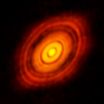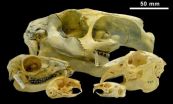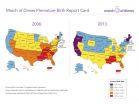(Press-News.org) Berlin, Germany (November, 2014) – A new study, which teamed cutting-edge engineering techniques with paleontology, has found that take-off capacity may have determined body size limits in extinct flying reptiles. The research simulated pterodactyl flight using computer modeling, and will be presented at the upcoming Society of Vertebrate Paleontology meeting in Berlin. Findings suggest that a pterodactyl with a wingspan of 12m or more would simply not be able to get off the ground.
Pterosaurs (commonly known as pterodactyls) were truly giants of the sky. With wingspans of up to 10m, the largest species may have weighed as much as a quarter of a ton. They would have dwarfed the largest known bird at just one third this size. How could such behemoths stay aloft? What prevented them from becoming even bigger?
These questions sparked a novel partnership between Colin Palmer: entrepreneur, mechanical engineer and now doctoral student at Bristol University (UK); and Mike Habib: anatomist and paleontologist at University of Southern California.
"It has been fascinating to apply an engineering approach to understanding biological systems" says Palmer, who has worked on yachts, hovercraft, sailing vessels and windmills before turning to pterosaurs. "Working with Colin has been particularly rewarding" says paleontologist Habib "as we have complimentary skill sets and come at the problem from different backgrounds."
The pair used 3D imaging of fossils to create a computer model of a pterosaur with a 6m wingspan. This model was then scaled up to create enlarged models with 9m and 12m wingspans. They were used to estimate the wing strength, flexibility, flying speed and power required for flight in massive pterosaurs.
Results showed that even the largest pterosaur model could sustain flight by using intermittent powered flight to find air currents for gliding. It could also slow down sufficiently to make a safe landing because the pterosaurs wing is formed from a flexible membrane.
Take-off, on the other hand, proved an entirely greater challenge. Unlike modern birds, pterosaur anatomy suggests that they used both their arms and legs to push themselves off the ground during take-off, a maneuver known as the 'quadrupedal launch'. However, once wingspans approached 12m, the push-off force required to get the model off the ground was too great.
The challenge of propelling a 400kg animal using a quadrupedal launch kept the 12m-wingspan model strictly on terra firma. Palmer concludes "Getting into the air ultimately limited pterosaur size. Even with their unique four legged launch technique, the iron laws of physics eventually caught up with these all time giants of the cretaceous skies."
INFORMATION:
About the Society of Vertebrate Paleontology
Founded in 1940 by thirty-four paleontologists, the Society now has more than 2,300 members representing professionals, students, artists, preparators, and others interested in VP. It is organized exclusively for educational and scientific purposes, with the object of advancing the science of vertebrate paleontology.
Society of Vertebrate Paleontology website: http://www.vertpaleo.org
Journal of Vertebrate Paleontology
The Journal of Vertebrate Paleontology (JVP) is the leading journal of professional vertebrate paleontology and the flagship publication of the Society. It was founded in 1980 by Dr. Jiri Zidek and publishes contributions on all aspects of vertebrate paleontology.
Journal Web site: http://vertpaleo.org/Publications/Journal-of-Vertebrate-Paleontology.aspx
AUTHOR CONTACT INFORMATION
COLIN PALMER
PhD student
Department of Earth Sciences
University of Bristol
UK
colin.palmer@bristol.ac.uk
Research Associate
Ocean and Earth Science
National Oceanography Centre, Southampton
University of Southampton
SO14 3ZH UK
+447891079974
colinpalmer@me.com
MICHAEL HABIB
Assistant Professor
Cell and Neurobiology
Keck School of Medicine of USC
University of Southern California
Research Associate
Dinosaur Institute
Natural History Museum of Los Angeles County
(443) 280-0181
biologyinmotion@gmail.com
OTHER EXPERTS NOT DIRECTLY INVOLVED WITH THE STUDY
MARK WITTON
School of Earth and Environmental Sciences
University of Portsmouth
Mark.witton@port.ac.uk
+(44) 2392 842418
ALEXANDER KELLNER
Setor de Paleovertebrados
Departamento de Geologia e Paleontologia
Museu Nacional/UFRJ
Quinta da Boa Vista
s/n São Cristóvão
Rio de Janeiro
RJ 20940-040
Brazil
kellner@mn.ufrj.br
SVP MEDIA RESPONSE TEAM CONTACTS
PAUL M. BARRETT
Researcher, Dinosaurs and Fossil Reptiles
Department of Palaeontology
The Natural History Museum, London
London, UNITED KINGDOM
p.barett@nhm.ac.uk
Phone: +44 (0)207 942 5552
JULIA CLARKE
Department of Geological Sciences
The University of Texas at Austin
Austin, TX USA
Julia_Clarke@jsg.utexas.edu
Phone: +1-512-232-7563
IMAGES
Image 1 – Pterosaur hunting.jpg, illustration by Mark Witton
Image 2 – Pterosaur vs giraffe.png, illustration by Mark Witton
Tricky take-off kept pterodactyls grounded
2014-11-06
ELSE PRESS RELEASES FROM THIS DATE:
Revolutionary ALMA image reveals planetary genesis
2014-11-06
For ALMA's first observations in its new and most powerful mode, researchers pointed the antennas at HL Tauri — a young star, about 450 light-years away, which is surrounded by a dusty disc [1]. The resulting image exceeds all expectations and reveals unexpectedly fine detail in the disc of material left over from star birth. It shows a series of concentric bright rings, separated by gaps [2].
"These features are almost certainly the result of young planet-like bodies that are being formed in the disc. This is surprising since such young stars are not expected to ...
Birth of planets revealed in astonishing detail in ALMA's 'best image ever'
2014-11-06
Astronomers have captured the best image ever of planet formation around an infant star as part of the testing and verification process for the Atacama Large Millimeter/submillimeter Array's (ALMA) new high-resolution capabilities.
This revolutionary new image reveals in astonishing detail the planet-forming disk surrounding HL Tau, a Sun-like star located approximately 450 light-years from Earth in the constellation Taurus.
ALMA uncovered never-before-seen features in this system, including multiple concentric rings separated by clearly defined gaps. These structures ...
Cellular extensions with a large effect
2014-11-06
Tiny extensions on cells, cilia, play an important role in insulin release, according to a new study, which is published in Nature Communications. The researchers report that the cilia of beta cells in the pancreas are covered with insulin receptors and that changed ciliary function can be associated with the development of type 2 diabetes.
Cilia are tiny extensions on cells and they are credited with many important functions, including transduction of signals in cells. Defects in cilia have been implied in several diseases and pathological conditions. Thus, scientists ...
Zebrafish stripped of stripes
2014-11-06
VIDEO:
A 10-day-old zebrafish gets its stripes over the next 30 days, one image taken a day.
Click here for more information.
Within weeks of publishing surprising new insights about how zebrafish get their stripes, the same University of Washington group is now able to explain how to "erase" them.
The findings – the first published Aug. 28 in Science and the latest in the Nov. 6 issue of Nature Communications – give new understanding about genes and cell behaviors ...
Rabbit-proof hoof: Ungulates suppressed lagomorph evolution
2014-11-06
Berlin, Germany (November, 2014) – Closely related groups can differ dramatically in their diversity, but why this happens is a fundamental question in evolutionary biology, dating back to Darwin's observation that a few hyper-diverse groups dominate the modern biota. One of the most extreme examples of this observation is found in the comparison of rodents (Rodentia) and rabbits (Lagomorpha). These two mammalian orders are sister groups, but while rodents have diversified to over 2000 living species and an enormous range of body sizes, lagomorphs (rabbits, hares, ...
Orange is not the new black: Just highly allergenic for one toddler
2014-11-06
ATLANTA, GA (November 7, 2014) – Many people don't realize allergies and asthma go hand-in-hand, and about 90 percent of kids with asthma also have allergies. Even more important, when asthma is undiagnosed or poorly controlled, children are at risk for suffering difficult-to-treat allergic reactions to food.
According to a study presented at the American College of Allergy, Asthma and Immunology (ACAAI) Annual Scientific Meeting, a two and-a-half year-old girl in Pennsylvania suffered a life-threatening allergic reaction (anaphylaxis) to eating an orange – ...
US preterm birth rate hits healthy people 2020 goal 7 years early
2014-11-06
WHITE PLAINS, N.Y., Nov. 6, 2014 – The national preterm birth rate fell to 11.4 percent in 2013 – the lowest in 17 years -- meeting the federal Healthy People 2020 goal seven years early. Despite this progress, the U.S. still received a "C" on the 7th annual March of Dimes Premature Birth Report Card because it fell short of the more-challenging 9.6 percent target set by the March of Dimes, the group said today.
"Achieving the Healthy People 2020 goal is reason for celebration, but the U.S. still has one of the highest rates of preterm birth of any high ...
New airport security screening method more than 20 times as successful at detecting deception
2014-11-06
WASHINGTON - Airport security agents using a new conversation-based screening method caught mock airline passengers with deceptive cover stories more than 20 times as often as agents who used the traditional method of examining body language for suspicious signs, according to new research published by the American Psychological Association.
In experiments spanning eight months, security agents at eight international airports in Europe detected dishonesty in 66 percent of the deceptive mock passengers using the new screening method, compared to just 3 percent for agents ...
Biodiversity of plant cell culture collections offers valuable source of natural insecticidal and fungicidal products
2014-11-06
New Rochelle, NY, November 6, 2014—Screening large cell culture collections containing plant samples obtained from diverse geographic regions, climates, and soil and growing conditions for biological activity can reveal a wealth of natural compounds with potential applications for crop improvement and protection. The capability to do reproducible screening and genomic analysis of the more than 2,000 plant cell lines maintained in culture at the Institute of Cell Biology and Genetic Engineering, in Kiev, Ukraine is describe in an article in Industrial Biotechnology, ...
European satellite could discover thousands of planets in Earth's galaxy
2014-11-06
A recently launched European satellite could reveal tens of thousands of new planets within the next few years, and provide scientists with a far better understanding of the number, variety and distribution of planets in our galaxy, according to research published today.
Researchers from Princeton University and Lund University in Sweden calculated that the observational satellite Gaia could detect as many as 21,000 exoplanets, or planets outside of Earth's solar system, during its five-year mission. If extended to 10 years, Gaia could detect as many as 70,000 exoplanets, ...








